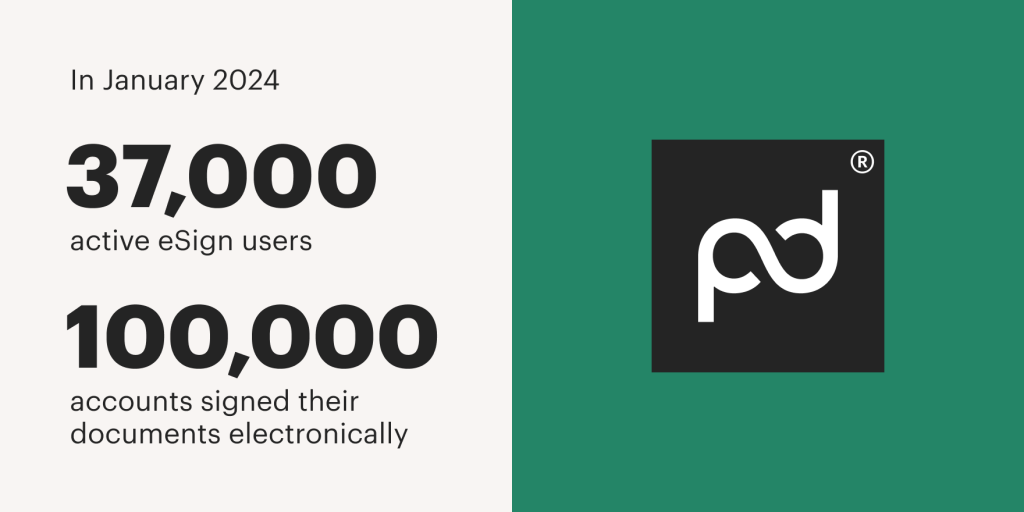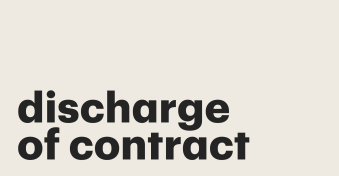Streamline your document workflow & close deals faster
Get personalized 1:1 demo with our product specialist.
- Tailored to your needs
- Answers all your questions
- No commitment to buy
Schedule your free live demo
Sometimes, it seems like the world revolves around business contracts.
They’re at the core of how all companies do business, which means that the drafting process can be daunting and challenging — after all, a lot is riding on those documents.
So if you need to write one up right now, don’t panic just yet.
In this guide, we’ll teach you how to draft a contract to cover everything you need to include, make perfect sense, and, of course, be legally enforceable.
Key takeaways
- You don’t need a law school degree for drafting contracts — however, some domain expertise or legal advice may be required if you want to create an outstanding one.
- Make sure to include every essential element of a written contract, including terms and conditions, acceptance procedures, and detailed descriptions of products or services supplied under the contract.
- Ensure that you don’t miss anything by using a step-by-step checklist.
- Using contract management software can make writing contracts considerably easier.
Can anyone write a contract?
If you’re worried about whether you have the right qualifications or experience to write a contract, you can relax — there are no requirements dictating who can or cannot write a contract.
After all, a contract is simply a written agreement between two or more parties.
If someone uses the back of a napkin to promise you that they’ll pay you for lunch tomorrow, that’s technically a contract.
However, contract authoring is more complex than this in the real world.
Some exceptionally complex contracts may require the theoretical knowledge and practical experience of someone with a law degree.
However, the majority of business contracts that you are most likely to work with in life require just a basic understanding of the essential elements of an efficient contract, clarity of terms, and optimization for the context of the deal in question.
If you’re already working in the legal profession, you’ve likely seen enough contracts that you can start to write a pretty effective one yourself.
And if you are not, no problem! Keep reading to learn Contract Writing 101 as well as some valuable tips and tricks.
How to draft a contract: the things to include
When you’re drafting a contract, you can get easily overwhelmed by the number of things that you think have to be contained within it.
Every contract will be different (so you should consider the specific details of your agreement), but here’s a checklist of some of the non-negotiable elements of a contract:
1. The agreement
We do not write contracts for the sake of it — they all mean something.
That’s why the most important part of any legal contract is the agreement.
The subject matter of a contract between a landlord and a tenant, for instance, would be an agreement that states that the tenant has agreed to rent the property for a certain fee, and the landlord will provide said property to the tenant under the agreed-upon conditions.
It doesn’t really matter where you put this information, but you must include it.
Contracts without an object are not considered legally binding agreements in courts and present no value.
Try to write the agreement as clearly as possible so that no ambiguity can be confused in the future.
2. The parties
Who said that lawyers weren’t fun? We’re already starting to talk about parties!
Jokes aside, there’s not much dancing when it comes to writing a contract. The term “party” refers to someone involved in the agreement.
In the example of a rental agreement, the two contracting parties would be the landlord and the tenant.
When you’re drafting a contract, make sure to verify and include the full legal names and addresses of each party — this usually happens in the opening paragraph of every contract.
This will ensure that there’s no uncertainty about who’s involved in the contract, while it should also help one party to contact the other if there are any issues further down the line.
3. The “consideration”
Let’s be honest — the “consideration” is just a fancy legal term. In most cases, we could just refer to money.
In the case of the rental agreement, the consideration would be the monthly rent paid by the tenant.
Other forms of value are also covered by this term, including non-monetary ones.
However, you will almost certainly be writing a contract for an agreement that implies money getting exchanged for goods or services.
Inserting the consideration into the contract is vital if you want to be sure that the paying party will be legally bound to make those payments.
4. Terms and conditions
The terms and conditions are what give legal contracts a bad name.
How many times have you had to sign a contract that includes dozens of pages of conditions?
Nonetheless, you should always include a section for terms and conditions when you draft an agreement.
These will outline each party’s obligations and rights.
This is essentially a section that makes it as clear as possible just what each party is agreeing to.
5. Acknowledgement of competence
There are protections in place to stop those who wouldn’t be considered legally competent in a court of law, such as children, from signing agreements that could take advantage of them.
For your contract to be legally valid, you should include a statement that recognizes that each party has the mental and legal capacity to sign the contract.
6. Section for dates and signature
A contract without a signature isn’t worth the paper it’s printed on.
After all, it’s only with the signature of each party that an agreement becomes legally enforceable.
This means that you shouldn’t forget to include a section for every party to sign the contract.
In addition to that, most contracts will have to be dated.
This is needed for any issues in the future, while it can also have other effects: sometimes, an agreement is in place from the moment of signing, while other contracts will have a specific contract effective date.
When it comes to signing contracts, most of them are signed electronically these days to reduce delays and paper consumption, allowing them to be digitally archived locally or stored securely in the cloud.
The majority of PandaDoc clients have long switched to electronic signatures to go paperless, minimize process delays, and replace file cabinets with modern, secure cloud storage.
This conveniently integrates with our document authoring, management, automation, and collaboration tools, showcasing some of our most popular features.

And that’s not just words — the number of active eSign users in January 2024 exceeded 37,000, while almost 100,000 accounts have signed their documents electronically at least once using the platform.
How to draft a contract between two parties: A step-by-step checklist
Now that you know what you need to include in your contract, it’s time for you to start drafting.
Following this step-by-step checklist will mean that you can write your contract with confidence:
1. Know your parties
It doesn’t get any easier than that — the parties are included in the opening paragraph of every contract you can think of.
Make sure to request this information from the other party prior to starting to work on the contract.
2. Agree on the terms
You must be as straightforward as possible from the moment you start writing your contract.
Not only will this make contract management easier in the future, it will mean that the contract is simpler to draft and understand.
This is why you should make sure that all parties agree on the terms of the contract before you start to draft.
If you have to physically get the parties around a table to spell out an agreement, then do so.
However, for simple contracts, just receiving written intentions from each party should suffice.
3. Set clear boundaries
Let’s say that someone has agreed to wash your car.
They have just spent all day making it spotless, so does it mean that they’ve fulfilled their obligations?
Well, if the contract does not explicitly specify when the service starts and when it ends, they could argue that they never agreed on when they would stop washing your car — and potentially refuse to leave your driveway.
Of course, this sort of exaggerated dispute is unlikely to occur in real life, but it’s very indicative of why it’s so important to specify an endpoint in the contract once you’ve outlined the principal agreement.
A lot of contracts are for ongoing work, but even those should include a termination clause — these clauses can also be used for parties to end a contract prematurely.
Finally, don’t forget to include a force majeure clause for situations that may get affected by circumstances beyond human control and contract fulfillment becomes impossible.
4. Spell out the consequences
Contracts are an expression of good faith.
However, not everything always goes exactly to plan, so you need to manage contract risks right from the get-go.
Once you’ve drafted the agreement and specified the duration of the contract, you should outline the consequences for each party should they break the agreement.
These will depend on the type of contract that you’re producing.
In a rental agreement, for instance, you’ll need to include the consequences of a tenant failing to pay rent on time or damaging parts of the property.
Without these sorts of protections, the value of a contract becomes essentially worthless.
5. Specify how you will resolve disputes
Of course, simply including penalty clauses is not necessarily enough to manage these issues, as it’s always possible that the parties will disagree over failures to enact the agreement.
You should ask the different parties to agree to a method of dispute resolution, such as mediation, arbitration, or civil litigation.
Putting this into the contract will mean that any disputes will be fairly straightforward to resolve.
6. Cover confidentiality
Sometimes, the contents of a contract must be kept under wraps — for example, sections may include confidential information or trade secrets.
If this is your case, you must insert a confidentiality clause into the agreement.
Breaching this confidentiality would then itself be a breach of contract.
7. Check the legality of the contract
When you’re thinking about how to draw up a legally binding contract, you’re probably most concerned about producing a document that is legally enforceable and, whenever applicable, fully compliant.
To be certain that your contract is actually workable, you must make sure that nothing in it violates any applicable laws or local regulations.
(If you have any doubt, consider it a sign that it’s time to seek qualified legal advice.)
8. Open it up to negotiation
All of the above may seem like a lot of work.
Unfortunately, you might have to do it more than once!
Before a contract is signed, you should open it up to negotiation between the parties — it may take a while and with lots of back-and-forth, but is likely worth the effort.
Use available tips and recommendations on contract negotiation to wrap it up faster and more efficiently,
However, if you’ve done a good job preparing the contract and researching its context, all the parties will likely be satisfied with your final agreement.
Tips for making your contract make sense
Now you know the step-by-step process of how to create a contract agreement.
But what about the actual writing that goes into a contract?
Follow these tips to make sure that your agreement makes sense:
Keep it simple
A legal agreement is not a space for boundless creativity and eloquence.
Overloading an agreement with wordy phrases and complex syntax will only make things more difficult, and you should also try to avoid jargon and legalese where possible.
Instead, use plain English throughout and remember who you’re writing for — not just the parties involved but also a potential litigator in the future.
In other words, don’t forget to keep every contract clause concise and to the point.
Watch out for modal verbs
Verbs like “may,” “shall,” and “will” need to be handled carefully when you’re drafting a contract.
“Shall” describes a compulsory action by a party — for instance, the tenant shall pay rent each month — while “will” is used for events that don’t require an obligation by a party.
Similarly, “may” is typically used as a way of saying “reserves the right.”
Avoid synonyms
Usually, we try to mix up our vocabulary when writing; however, it’s better to stick to the same words and phrases throughout a contract and avoid synonyms.
This will probably make you feel like your contract is repetitive — for example, you may get sick of using a word like “services” — but it will prevent confusion and ambiguity going forward.
Divide and conquer
You need to aim for ease and clarity when writing a contract.
Dividing the contract into multiple sections and subsections will help you simplify the agreement and improve its readability.
Try to avoid large blocks of text and use bullet points when possible.
Use contract templates and dedicated software to create your agreements
You should now be more confident about drafting, managing, and signing contracts.
However, there’s no getting around the fact that this involves a lot of work.
This is why PandaDoc contract templates can be so valuable.
Rather than having to start from scratch or even hire a law firm to do the work for you at exorbitant rates, you can simply choose from a range of templates and adapt them to your needs.
Similarly, contract management software will automate the process of looking after a contract once you’ve drafted it.
With these tools, drafting contracts and managing your other legal documents will be incomparably easier — schedule a demo or start a free trial today!
Disclaimer
PandaDoc is not a law firm, or a substitute for an attorney or law firm. This page is not intended to and does not provide legal advice. Should you have legal questions on the validity of e-signatures or digital signatures and the enforceability thereof, please consult with an attorney or law firm. Use of PandaDocs services are governed by our Terms of Use and Privacy Policy.
Originally published October 10, 2023, updated June 27, 2024


